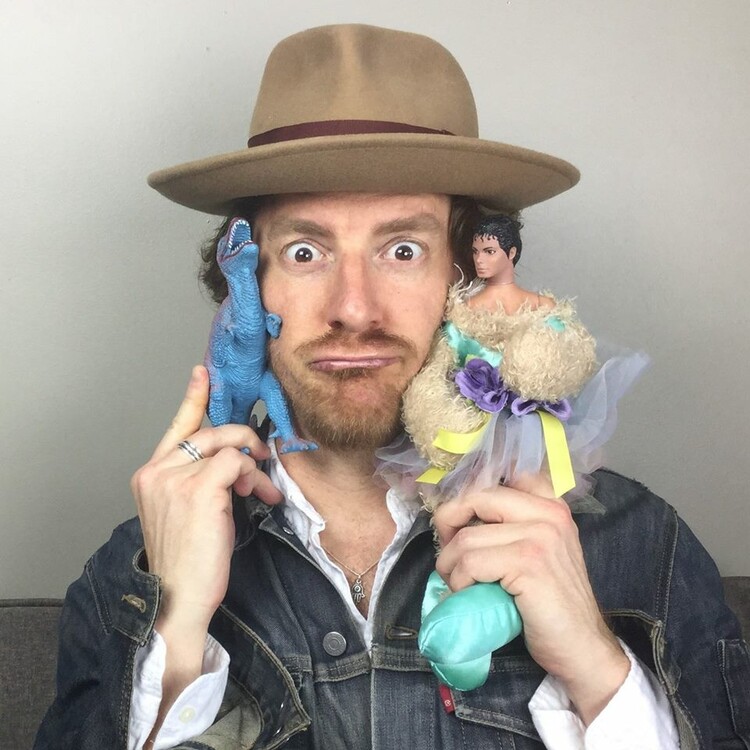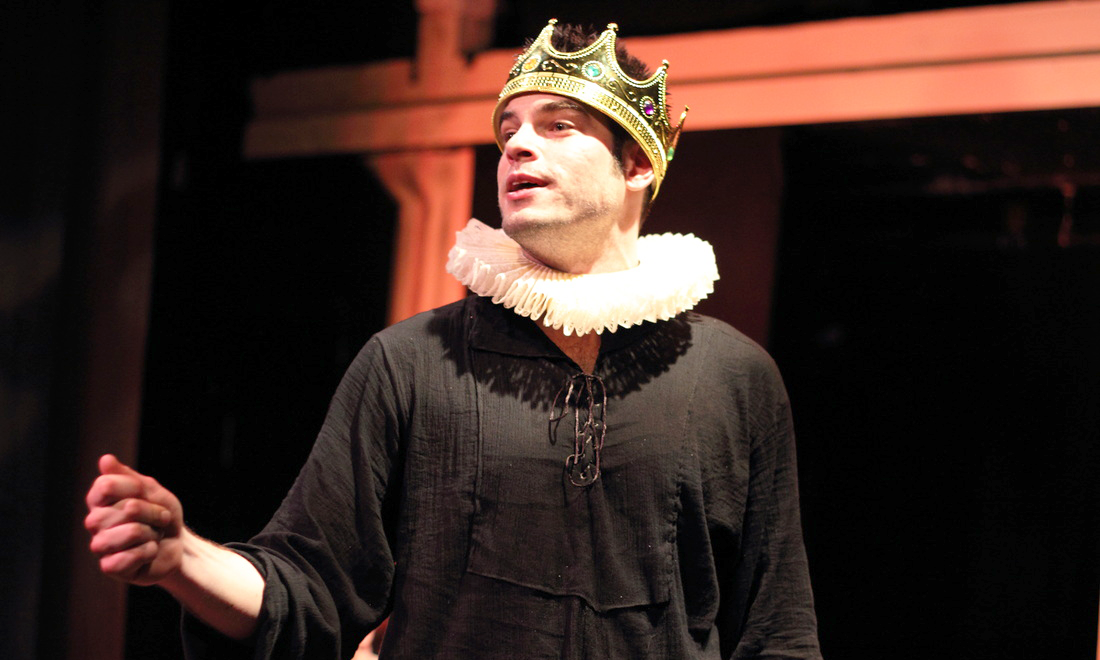Prologue: The Mission
Before you begin, you need to know why you are self-producing your play:
- To grow in your craft through collaboration and feedback.
- To build your career through reviews, credits, and exposure to producers and audiences.
- No one else will produce it!
If you selected 3, consider: If no one else will produce your play, it usually means you haven’t found the right match or made the right connections, timing hasn’t worked out, or producers sense your work lacks something or your craft needs development.
If you answered 1 or 2, I recommend you approach your self-production like you would the protagonist of the great play you’ve written: Set yourself a clearly and specifically defined goal that you will pursue no matter what obstacles challenge the way. Write yourself a mission statement laying it all out.
For instance, if you want to grow your craft, you should work with artists who can challenge you, who have more experience, and—importantly—who you trust will give feedback in a useful way. Be specific about the aspect of your craft you wish to strengthen. You should also plan on enough performances to see how your work plays to different crowds. You might have a mission statement like:
I am self-producing [INSERT BADASS NAME OF YOUR BADASS PLAY] in order to test and improve my comedy writing by working with a creative team with lots of farce experience, and I will be performing the show ten times to see how the comedy tracks across new audiences.
Or, if you want to boost your career through gaining reviews and engaging with other potential producers, your mission might be:
I am self-producing [INSERT SERIOUS TITLE OF SERIOUS PLAY] in order to draw attention to my work by collaborating with established artists and networking with local journalists and the literary staff at three local theatres.
Good! Now you’re like your strong protagonist, ready to chase your goal. Let it shape every choice you make, and refer back to your mission whenever you have to make a hard decision—which will be a lot.
Set yourself a clearly and specifically defined goal that you will pursue no matter what obstacles challenge the way.
Act One: Pre-Production
There are many phases to hit before you even enter rehearsal. I’m going to focus on four: blurbs, budgeting, script development, and hiring collaborators. Got your mission statement handy?
Blurbs
Writing a blurb might be the most important thing you can do at the start of the process. Not only will a great blurb tell audiences about your show, it tells you about your show. I sometimes don’t write a play until I have a strong version of a blurb—though I recognize that’s not the right process for every writer, or for every play. But if you can say what your show is about in fifty words, you know what you’re aiming for. A good blurb tells your audience exactly what to expect from the show, and it should get them excited to know more. I recommend using all of the development steps listed below to workshop your blurb: say it out loud—a lot—and get feedback. Most of my insight here has come from studying film loglines (you can ignore despotic rules like “don’t use character names”).
Budgeting
The business side of theatre, including the budget, is a huge component to producing a show. I’ll cover a few basics here, but I recommend deeper digging before you self-produce. Read all you can (see several options below), talk to others in your community, explore local industry standards, and learn about business requirements.
When I began self-producing, I did it purely to expand my career and skill set, so while I came up with a company name—Vaquero Playground—under which we did all of our shows, I never formally incorporated as a business. If you plan to do more than a one-off, you should consider filing as an LLC. This will keep the company budget separate from your personal finances. You may also register as a 501(c)3—a non-profit entity—which allows you flexibility such as taking donations and giving a tax write-off to donors, though becoming one can be a long and complicated process. One alternative is fiscal sponsorship, in which an umbrella company sponsors you so that you receive the benefits of non-profit status, without all of the difficulties. Companies like Fractured Atlas provide such coverage, but you may find a local organization or arts group willing to do the same.
Budgets range widely. A one-person play with three shows at a festival will have a different budget from a five-person play running four shows a week for a month, which will be different from an off-Broadway show running three months. Cast size, venue size, and production needs all change a budget incredibly. Sample budgets can help show the scope and number of elements you should account for, even if your amounts will differ entirely. Some good examples are from Red Table Theatre, which offers two sample spreadsheets (including one for the Edinburgh Fringe) and breaks down the budget by department, and from Broadway Budget, which covers the other end of the spectrum cost-wise, giving a comprehensive list of the things needed to budget for.
Refer back to your mission whenever you have to make a hard decision—which will be a lot.
Where do you get the money to self-produce? You might contribute some (or all) from your own pocket; you can raise money from friends, connections, and strangers through fundraising events or online appeals like Kickstarter or Indiegogo; or you can apply for grants from local or national government funds. How much money you need is an open-ended question. Doing your show outdoors in a public park will cost less than a downtown theatre. Rehearsing for four weeks in your living room is cheaper than two weeks in a hired rehearsal space. Hiring Equity actors will cost more than non-union performers. All of the topics in this article can alter your budget significantly in one direction or another, which is why I suggest firming up your mission before you begin. If you know your mission can only be achieved by hiring Equity actors and getting an expensive venue, you’ll know the money you have to raise is worth it to reach your goal.
I did my first production, Bear Patrol, for $3,000. This amount came out of my own pocket after working hard and saving, and I had received a grant to use the venue at a huge discount (a big part of why I chose it). Part of my mission was to minimize material waste, so the show used exclusively reused and repurposed materials, which saved a lot of money. I worked with non-union cast and crew, and everyone on the production received a small stipend. For my second full production, From Denmark With Love, the budget was $8,750. Approximately $4,500 was raised through online donations—aided by a great video and a fan base built up over the course of the development process—and the remainder came out of pocket. I received a comparable venue-grant, continued to keep material expenses down, and put the additional funds towards paying cast and crew bigger stipends.
Like a good story, these numbers can vary dramatically. With an Equity cast and lacking the grant, these productions would have cost upwards of twenty or thirty thousand dollars—double that with fully realistic sets and costumes with all new materials. But for me, the most important goal was honing my craft and building a fan base, and I was willing to put less towards a slick production.
Script Development
Script development can mean many things, but I use it to encompass any steps your script goes through before production. This could include sharing the script with mentors and colleagues for feedback; table reads, where you get actors and invited guests to read the play out loud in a private place, often followed by conversation for feedback; and staged readings, where actors and a director rehearse the play then read it aloud for an invited audience, also followed by conversation for feedback.
Getting feedback from mentors and colleagues is always a good idea, but I don’t think you should ever produce a play without holding a table read or a staged reading. Your script is going to be performed out loud, so you should hear it beforehand. Both options can be good, but you need to know why you’re doing them. Look back at your mission—what helps you achieve your goal?
Getting feedback from mentors and colleagues is always a good idea, but I don’t think you should ever produce a play without holding a table read or a staged reading.
If you want to find great collaborators, a table read gives actors an opportunity to get to know your work and gives you a chance to see how they respond to your words and ideas. If you want to get as many people as possible to see your production, try a free staged reading a few months before and spread the word to fill seats. Staged readings can be an essential part of the process not only for the script but for fundraising and marketing. You can offer treats like food, beer, and wine, do a special welcome so the audience feels like they’re part of something unique; and always push to get email addresses of the attendees. You can also test drive a director with a staged reading: you’ll discuss the script and see them work with actors in rehearsal. Most importantly, these processes give you feedback on your work. If you want to write a hit comedy that has audiences cackling and telling all their friends it’s a must-see, then you’d better not stop at letting friends read it quietly.
The development process for my play From Denmark With Love helped connect me with the audience. I was asked to adapt act two of Hamlet into a ten-minute play, and I wrote it as a James Bond thriller: Hamlet the superspy, Claudius the supervillain, Horatio as the right-hand man and weapons master, Gertrude and Ophelia as “Bond girls.” People loved it, asking when we would do the full story. Months later, after writing the full-length version, we held a staged reading with food and cocktails. This kept up the relationship and anticipation with the audience, allowed me to test out new aspects of the script, and kicked off a fundraising campaign. We left that reading with seventy-five fans who were eager to see the full production and who helped us spread the word and raise money.













Comments
The article is just the start of the conversation—we want to know what you think about this subject, too! HowlRound is a space for knowledge-sharing, and we welcome spirited, thoughtful, and on-topic dialogue. Find our full comments policy here
This essay was such an eye opener for me as a budding playwright. It’s so easy to be overcome with things like budgeting when your trying to self produce your own pieces. I feel like this article is a great way to get your footing
Thanks Noah. I'm glad you found it insightful!
Great practical tips, John! How did you navigate the tension between being both producer and playwright, given that producers sometimes (often) have to say "No" to things, particularly when it comes to budget, e.g. particular actors, designs, or special effects that you can't afford?
Great question, Darren! That tension can come up a lot. I do my best to keep my two roles separate, and approach every production question with my Producer hat on. This is really aided by having a clear mission and great collaborators. Apart from humans (actors, designers, etc) just about everything in theatre can be done on a huge budget spectrum: from free to Broadway. When sticking points come up, and a designer is pushing for something specific that goes beyond the budget, I first challenge the team to see if there's a cheaper, more mission-centric way to achieve the same result within the budget. If there's not, I look at other parts of the production: can we prioritize IMPORTANT ELEMENT 1 by spending less money somewhere else? These challenges are great because they can lead to the most inventive results. Every time I've said "no" as a producer, it's actually led to stronger choices. If none of that works, Producer John will chat with Playwright John to say "we can't figure out how to make this work." I have twice had to go back and make writing changes based on production realities (I mean significant changes, not line tweaks), and in both cases it made me a better writer. By working with a great team and trying but failing to solve matters for the script, I actually improved my writing craft significantly by finding new ways of storytelling to achieve what we needed to. (The Playwright even bought the Producer a drink afterwards, as a thank you).